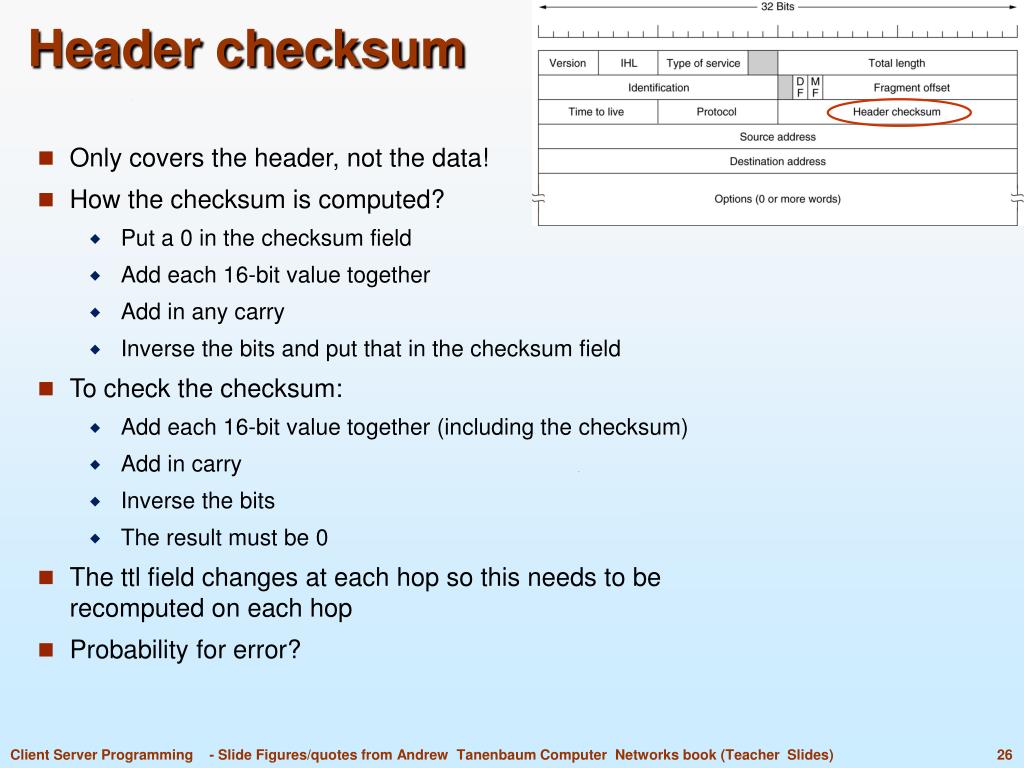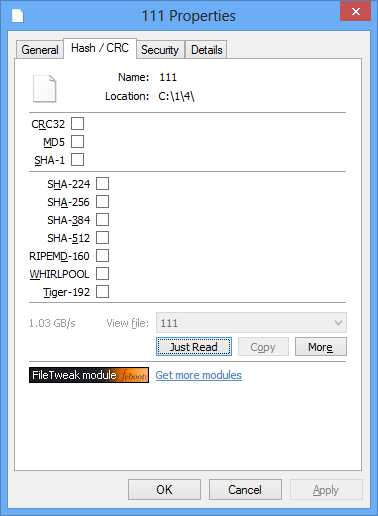
It goes over the theory rather well, but the author never gets to a simple "this is it." He does say what the parameters are for the standard CRC32 algorithm, but he neglects to lay out clearly how you get to it. I've read A Painless Guide To CRC Error Detection Algorithms, and I must say it was not painless. I understand that it is the remainder from a non-carry-based arithmetic division of the message value, divided by the (generator) polynomial, but the actual implementation of it escapes me. IEEE, 2004.Maybe I'm just not seeing it, but CRC32 seems either needlessly complicated, or insufficiently explained anywhere I could find on the web.
#CRC VS CHECKSUM CODE#
"Cyclic redundancy code (CRC) polynomial selection for embedded networks." Dependable Systems and Networks, 2004 International Conference on. *Koopman, Philip, and Tridib Chakravarty. This is why CRCs are still used today for error detection.
#CRC VS CHECKSUM MAC#
The same guarantee of error detection does not hold if you try to MAC an 82bit message into a 15bit MAC. This means that an error will always be detected in a message frame (82 bits) with 1-5 random bit flips. Which makes a MAC good for authentication.Īccording to the study done by Koopman et al.*, the 15 bit CRC in CAN guarantees that all message collisions are at least 6bits in hamming distance away from each other. There are no guarantees made by the MAC other than the fact that there is a low probability of two messages of having the same MAC (1/2^n). The receiver can then use the same process to verify that the message is authentic. This tag is generated by mixing the message, the secret key and a counter and then hashing the result. Typically, a sender generates a tag to append to a message. The MAC is a pair of algorithms: generate and verify. That does not mean that they can actually replace a cryptographic hash function to any extent, but it shows that the descriptions of both families of functions are so similar that could be mistaken by an inattentive observer.Ī MAC ensures a receiver that a message is authentically generated by a sender using a shared secret (key). In particular, they are used as a hash function in industrial networks, where the hardware capability is usually heavily bounded and real cryptographic hashes can be a heavy choice.
#CRC VS CHECKSUM 32 BIT#
However, the fact that it generates a 32 bit long digest led to the believe that it can be used as a cryptographic hash for integrity control.


They should stay as distant tools with different purposes that should not be confused, but there is CRC32 to complicate the difference.ĬRC32 is a checksum that derives a 32 bit long digest, that is used, for instance, to check if a compressed file was damaged while being transferred. But I understand the point: both generate fixed length values that can help to indicate when integrity was somehow compromised. The short hash does optimally over all inputs, and as a result does worse than CRC on the inputs CRC is good at dealing with.įrom my point of view, they would be extremely distant relatives. The CRC is geared towards reliably detecting error patterns that commonly occur in transit, so it will do better on those kinds of errors and worse on others.

This is better than a truncated cryptographic hash of similar length would be able to do.Ī cryptographic hash truncated to 32 bits can easily collide with two inputs that differ in only one or two bits, whereas a CRC won't. all 1-2 bit errors in short inputs, as well as some other common classes of errors in typical applications (e.g. They are meant to prevent particular kinds of errors. CRC32 vs SHA-256)ĭue to their different requirements, checksums are not just "worse, but faster hashes".

So, essentially they are non-secure versions of cryptographic hashes, one could say? Thus for the same reason, these checksums are "cheaper" to compute than cryptographic hashes? (e.g. They are also meant to be one-way (an attacker cannot know the preimage without guessing), for which there is no parallel with checksums. However, hash functions have many purposes. Are checksums basically toned-down versions of cryptographic hashes? As in: they are supposed to detect errors that occur naturally/randomly as opposed to being designed to prevent a knowledgeable attacker's meticulous engineering feat?


 0 kommentar(er)
0 kommentar(er)
